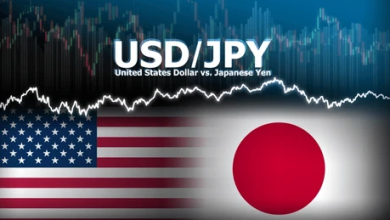Crude Oil:
Goldman Sachs, in its latest report, expects a lower trading range for Brent crude of $59–63 per barrel this year and $55–58 per barrel in 2025.
- GS anticipates the U.S. will avoid recession and that OPEC+ will moderately increase supply.
- Notably, Goldman forecasts a very limited demand growth of just 0.3 mbd this year, significantly below OPEC’s revised forecast of 1.3 mbd (down from 1.45 mbd).
- The EIA expects demand growth of 0.9 mbd this year, while the IEA projects 1.03 mbd.
- GS warns that a worst-case scenario for oil involves a recession and the full return of OPEC+ production from voluntary cuts—potentially pushing Brent crude to as low as $40 per barrel by 2026.
OPEC+ has announced a production increase of 138k bpd starting in April and 411k bpd in May.
- While this is technically bearish for prices, it’s important to remember that OPEC+ previously indicated countries that exceeded quotas must now reduce output. If enforced, the net supply change could be neutral.
Donald Trump made positive comments about nuclear talks with Iran, although Iran’s Supreme Leader expressed skepticism over constructive negotiations with the U.S. in upcoming talks in Oman. Meanwhile, China reported optimistic oil import data. In March, Chinese crude imports rose to 12.1 mbd—marking the highest level since August 2023.
U.S. oil inventories are rising seasonally but remain below last year’s levels and the 5-year average.
Source: Bloomberg Finance LP, XTB
Prices have recently disconnected from physical fundamentals. Despite strong refining margins, oil has fallen sharply—suggesting hedge fund activity may have amplified the recent sell-off. Source: Bloomberg Finance LP, XTB
Oil futures are trading well below front-month calendar spreads, which typically reflect tightness in supply.
Source: Bloomberg Finance LP, XTB
Natural Gas:
Natural gas prices continue to fall, even though heating degree days in the U.S. last week were above seasonal averages.
- Simultaneously, production has bounced back. Combined with muted demand, this has driven inventory builds beyond seasonal norms.
The key driver for summer gas prices will be the pace of LNG exports. If countries like Europe impose retaliatory tariffs on U.S. gas, it could spark another major glut.
Gas inventories in the U.S. are rebounding rapidly, likely breaching the 5-year average soon.
Source: Bloomberg Finance LP, XTB
Comparative storage levels are rising again, justifying further downside risk toward $3/MMBTU.
Source: Bloomberg Finance LP, XTB
Demand has returned to the 5-year average, while production remains elevated, well above typical seasonal ranges.
Source: Bloomberg Finance LP, XTB
Daily demand has trailed supply for some time, suggesting storage builds will continue over the coming weeks.
Source: Bloomberg Finance LP, XTB
Gold
Goldman Sachs has raised its gold price forecast from $3,300 to $3,700 per ounce.
- In a more extreme scenario—escalating trade wars or recession—the bank doesn’t rule out a peak price of $4,500 per ounce.
- This marks Goldman’s third upward revision for gold in 2024.
- The bank highlights the growing influence of gold ETFs, which have resumed accumulation after nearly a year, as well as rising physical demand from Asia.
- Many Asian central banks have been increasing their gold reserves recently as a way to diversify away from the U.S. dollar.
- GS now expects central banks to buy 80 tons of gold monthly, up from its previous 70-ton estimate.
Even if recession fears ease and ETF demand reverses, Goldman sees potential for gold to still reach $3,550 per ounce.
Market uncertainty remains extremely high. While Donald Trump has introduced some tariff exemptions, others—particularly on electronics—remain exceptionally high. This continues to make gold a preferred safe haven.
Falling U.S. bond yields support gold. However, the recent bond sell-off was driven by concerns about U.S. fiscal stability—another factor benefitting gold.
Gold ETFs now hold nearly 90 million ounces, still below the 2020 peak of 110 million ounces.
Source: Bloomberg Finance LP, XTB
Copper
Copper is rebounding from the declines triggered by U.S. retaliatory tariffs and steep new import duties on China.
- Chinese demand shows signs of cooling: copper imports fell to 1.37 million tons from January through March—down over 5% YoY.
- Still, LME and Shanghai copper inventories have been declining since March. Despite being more than double their early 2024 levels, they remain historically low.
China’s 12-month credit impulse is still negative but at its highest level since the beginning of 2024—suggesting a potential bottom for copper may be near.
Copper prices in London have risen about 4% YTD, while U.S. prices are still up nearly 15%. At one point, U.S. copper gained over 30% and European copper 15%.
- Price convergence is expected as markets stabilize—likely positive for LME, but less so for COMEX.
- However, further tariffs on copper cannot be ruled out, which could widen the gap even more.
Copper inventories have declined recently, though still over 2x higher than last year.
Source: Bloomberg Finance LP, XTB
China’s credit impulse is recovering, but the 12-month change remains negative.
Source: Bloomberg Finance LP, XTB
Copper recently showed oversold signals, deviating more than 2 standard deviations below its 1-year average and briefly falling under its 5-year mean. Source: Bloomberg Finance LP, XTB
The copper-to-gold ratio has fallen below 3, the lowest since at least the mid-1980s—signaling copper is extremely undervalued relative to gold. In such conditions, yields should be significantly lower.
Source: Bloomberg Finance LP, XTB
The material on this page does not constitute financial advice and does not take into account your level of understanding, investment objectives, financial situation or any other specific needs. All information provided, including opinions, market research, mathematical results and technical analyzes published on the Website or transmitted To you by other means, it is provided for information purposes only and should in no way be construed as an offer or solicitation for a transaction in any financial instrument, nor should the information provided be construed as advice of a legal or financial nature on which any investment decisions you make should be based exclusively To your level of understanding, investment objectives, financial situation, or other specific needs, any decision to act on the information published on the Website or sent to you by other means is entirely at your own risk if you In doubt or unsure about your understanding of a particular product, instrument, service or transaction, you should seek professional or legal advice before trading. Investing in CFDs carries a high level of risk, as they are leveraged products and have small movements Often the market can result in much larger movements in the value of your investment, and this can work against you or in your favor. Please ensure you fully understand the risks involved, taking into account investments objectives and level of experience, before trading and, if necessary, seek independent advice.






